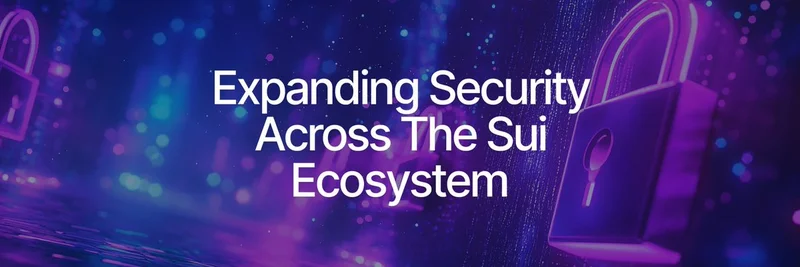World Liberty Financial, or $WLFI, has been making waves in the crypto space, especially with its high-profile association with former President Donald Trump and his family. A recent tweet from BSC News highlighted a comprehensive guide to this project, positioning it as a game-changer in finance. Let's break it down in simple terms, exploring what $WLFI is all about, its key components, and why it's generating so much buzz—and controversy.
What is World Liberty Financial?
At its core, World Liberty Financial is a decentralized finance (DeFi) protocol launched in late 2024. DeFi refers to financial services built on blockchain technology, cutting out traditional banks and intermediaries. WLFI aims to bridge the gap between traditional finance (TradFi) and DeFi by using stablecoins, governance tokens, and lending tools.
What sets it apart? The Trump family's involvement. Donald J. Trump is the "chief crypto advocate," while his sons Donald Jr., Eric, and Barron hold key roles. This political backing gives it a unique edge, but it also raises questions about decentralization—the idea that no single entity controls the system.
The project has already achieved notable milestones: raising over $550 million in token sales and launching its USD1 stablecoin, which now boasts a $2.65 billion market cap, ranking sixth among stablecoins globally.
Key Features of $WLFI
WLFI isn't just another token; it's building an ecosystem. Here's a look at its standout features:
USD1 Stablecoin: This is a digital dollar pegged 1:1 to the U.S. dollar, backed by U.S. Treasuries and cash equivalents. It's designed for stability, making it ideal for everyday transactions or as a safe haven in volatile markets. Launched in April 2025, it's available on chains like Ethereum, BNB Chain, and Solana. A massive $205 million minting event in August 2025 underscored its growing adoption.
WLFI App: Still in development, this user-friendly app will let you deposit crypto or fiat (traditional money), manage liquidity for spending, and track your portfolio with analytics. It's set to launch after the token generation event, aiming to make DeFi accessible to everyone, not just tech-savvy users.
Lending Platform: Powered by Aave V3—a proven DeFi lending protocol—users will soon be able to supply assets as collateral and borrow against them. Features include real-time health monitoring for loans and dynamic interest rates to keep things efficient.
Governance Token ($WLFI): The heart of community involvement. Launched on September 1, 2025, with a total supply of 100 billion tokens, $WLFI lets holders vote on proposals. It's traded on major exchanges like Binance and Coinbase. To prevent whale dominance (where big holders control everything), there's a 5% voting cap per wallet.
These features leverage established tech like Chainlink for cross-chain operations and Aave for lending, reducing the risks of building from scratch.
How Does $WLFI Work?
WLFI operates on blockchain rails, ensuring transparency and efficiency. The USD1 stablecoin maintains its peg through real-world asset backing, appealing to institutions wary of crypto volatility.
For governance, token holders propose ideas via Snapshot (a voting tool), discuss them, and vote. However, the Trump family's 22.5 billion tokens (22.5% of supply) give them significant influence, plus they claim 75% of net revenues through their LLC.
Cross-chain functionality via tools like Transporter.io allows seamless movement between networks, boosting usability. Token unlocks started in September 2025, with mechanisms like burns (permanently removing tokens from circulation) to create deflationary pressure—potentially increasing value over time.
Tokenomics Breakdown
Tokenomics is the economic model behind a crypto token. For $WLFI:
- Total Supply: 100 billion tokens.
- Circulating Supply at Launch: About 24.7%, allocated for liquidity and treasury.
- Allocations: Trump family holds 22.5%, with unlocks for early investors. Founders' shares are locked until community approval.
- Utility: Purely for governance—no staking rewards or yields yet.
- Deflationary Measures: A 47 million token burn in September 2025, plus proposals to use fees for buybacks and burns.
This setup aims for long-term sustainability, but the family's revenue share has sparked debates about fairness.
Potential Risks and Controversies
No project is without pitfalls, and $WLFI has its share:
- Centralization Issues: The Trump family's control challenges DeFi's ethos of decentralization. Their revenue entitlement could lead to conflicts of interest.
- Security Red Flags: Links to anonymous services, code similarities to a hacked project (Dough Finance, which lost $2.1 million), and team overlaps raise hack risks.
- Regulatory Hurdles: The SEC might view $WLFI as a security due to its structure, inviting scrutiny. Political ties could offer protection, but it's uncertain.
- Public Backlash: Media has called it a "scam," with incidents like hacked Trump accounts promoting fakes. Co-founder Zak Folkman dismisses these as political attacks.
As with any crypto investment, do your own research (DYOR) and consider the volatility.
Why $WLFI Matters in the Meme Token World
While WLFI positions itself as serious DeFi infrastructure, its Trump association gives it meme token vibes—think viral hype driven by celebrity endorsement. In the meme coin space, where tokens like Dogecoin thrive on community and narratives, $WLFI could blend utility with cultural appeal. It's not your typical pump-and-dump; it's aiming for mass adoption, potentially onboarding millions to crypto.
If you're a blockchain practitioner, keep an eye on WLFI's app launch and lending features—they could offer new tools for portfolio management and yield generation.
For more details, check out the original analysis on BSC News. What's your take on Trump entering crypto? Share in the comments!

